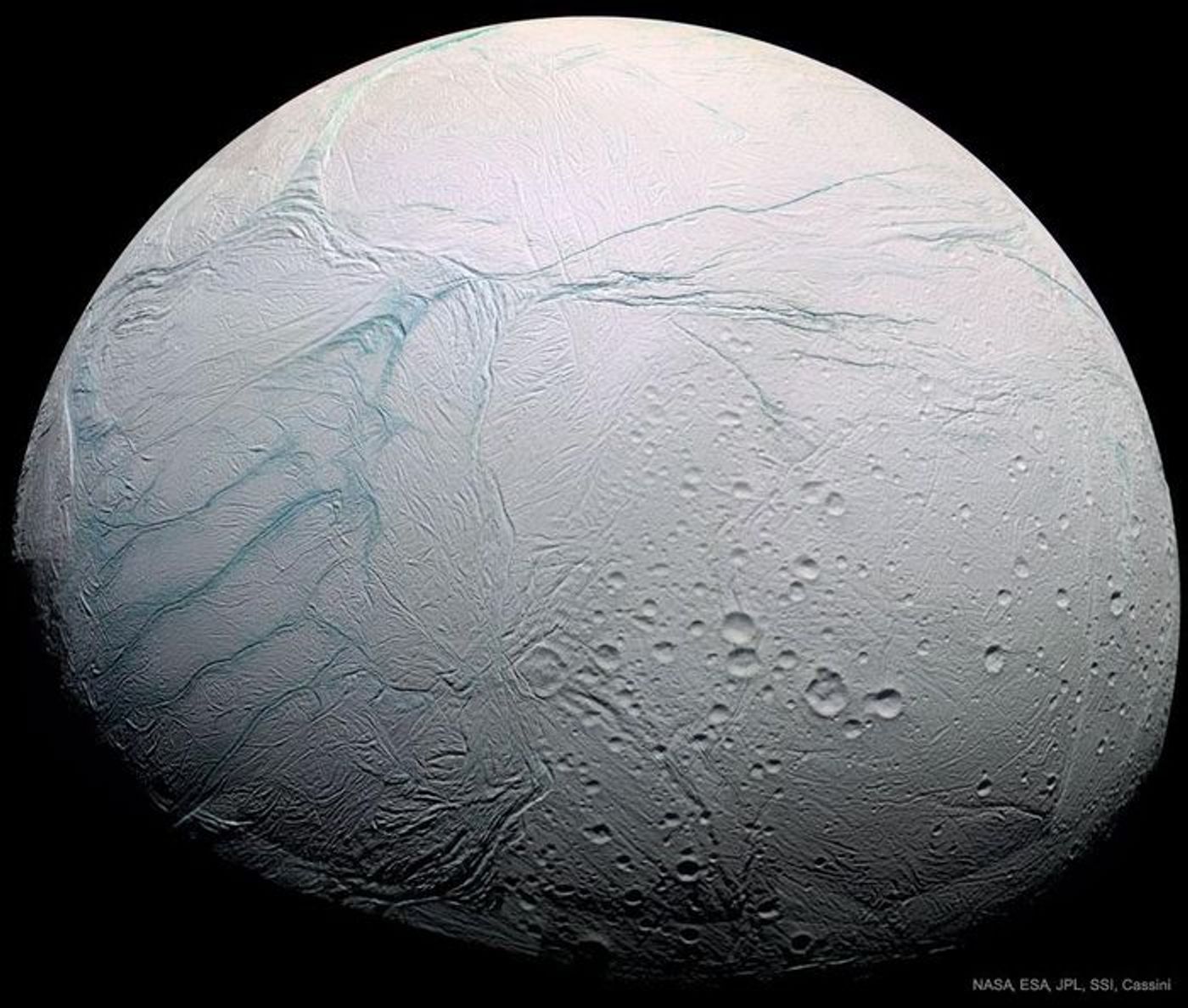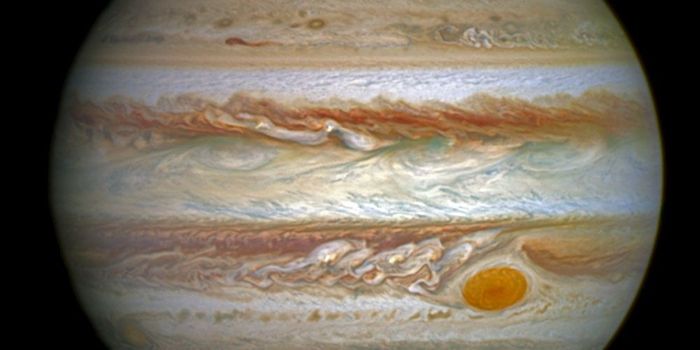What is the driving force behind geysers on Enceladus?
A recent study published in the Geophysical Research Letters suggests a possible explanation for geyser eruptions observed from the “tiger stripe” fissures of Saturn’s moon Enceladus. In 2006, the Cassini-Huygens spacecraft recorded evidence of geyser curtains shooting out as much as 200 kg of water per second from fissures near the south pole of Enceladus! This new study suggests that Enceladus goes through cooling cycles that last for millennia, and during these cycles the icy outer shell of Enceladus expands and this expansion may cause the icy shell to crack and allow the inner ocean below to boil out towards the surface, causing the geysers that are observed.
Enceladus, an icy moon of Saturn, orbiting at a distance of approximately 238,000 km (148,000 miles), measures 504 km (313 miles, or approximately as wide as the state of Arizona) in diameter and is covered in a layer of ice 20-30 km (12.4-18.6 miles) thick! The surface temperature of this tiny moon is approximately -201 Celsius (-330 Fahrenheit). Data from the Cassini-Huygens mission has provided evidence that a deep liquid ocean exists under the surface of the moon’s icy shell, which can escape into space through continuous “cryovolcanism.” But how such a small icy world could sustain so much geological activity has been puzzling to scientists.
In this study, the researchers ran models to map the conditions on Enceladus that could allow the cracks from the surface to reach down to the internal ocean below and cause the observed eruptions. The model takes into account the cycles of warming and cooling that last approximately one hundred million years, which is associated with changes in Enceladus’ orbit around Saturn. During this cycle, the icy shell undergoes a period of thinning and a period of thickening. The thickening of the ice happens through freezing at the base of the ice shell, which grows downward in the same manner in which ice forms on a lake. This downward expanding ice exerts a pressure on the ocean below, which is one possible mechanism to explain the presence of the geysers.
As the outer icy shell cools and thickens, the pressure on the inner ocean underneath increases since ice has more volume than water. This increased pressure also exerts a force back on the ice, which causes stress, and could create the cracks through the icy shell, which would become pathways for the liquid ocean to reach the surface. Although the pressure could creature the “tiger stripes” that are observed on the surface of Enceladus, the pressure created would never be large enough to squeeze the water up to the surface. A mechanism presented in Icarus in 2016 could explain how the eruptions occur: in the study, researchers proposed that water from the ocean leaks into the cracks that form, and then is immediately exposed to space since Enceladus lacks an atmosphere. Thus, when the ocean water hits these cracks, the water boils instantaneously because it is hitting the vacuum of space. This hypothesis is consistent with the physical appearance of the moon, which doesn’t show any evidence of cryo-lava flows leaking from the cracks. Further observations and research are warranted to confirm the hypothesis.
Sources: news.agu.org









